What is the Air Quality Like In a Typical One-Bedroom Apartment in Brussels?

Rigina Vodneva
Air Quality Intern Engineer @ AIRSCAN

In Europe, people spend 80% to 90% of their time indoors. While most modern offices are equipped with efficient ventilation systems, houses, and apartments often lack these technologies to monitor and improve air quality. Therefore, Airscan conducted a study to evaluate the presence of different pollutants inside a one-bedroom apartment located in Brussels, Belgium. The study focused on VOCs, PM2.5, and CO2, each of which significantly impacts human health.
Analysed Pollutants
Volatile Organic Compounds (VOCs) are chemicals that easily become gases at room temperature and come from common household items. These can include products like deodorants, sprays, paints, cleaning supplies, and air fresheners. VOCs can affect your health both immediately and over time, and their levels are often much higher indoors than outdoors (up to ten times higher). VOCs are released not only when you use these products but also while they are stored.
PM2.5 refers to particulate matter suspended in the air, consisting of solid or liquid particles with a diameter of 2.5 micrometers or smaller. This category of pollutants, along with PM10, PM0.1, and PM4, varies in size and aerodynamic properties, influencing its health impacts. PM2.5 is mostly released from human indoor activities such as cooking, smoking, and wood burning. Importantly, the smaller the particles, the more dangerous they are, as they can penetrate deeper into the respiratory system and even enter the bloodstream, leading to serious health problems.
Carbon dioxide (CO2) is a colorless, non-flammable gas crucial to Earth’s carbon cycle and various environmental processes. While necessary for maintaining habitable conditions, elevated external CO2 levels contribute to global warming as a greenhouse gas. Indoors, high levels of carbon dioxide can be attributed to exhalation and breathing in spaces with inadequate ventilation. High indoor CO2 levels serve as an indicator of poor ventilation; the more CO2, the less ventilation there is. Additionally, elevated CO2 levels can lead to headaches, difficulty concentrating, and other health issues.
Research Overview
The research was carried out in a typical one-bedroom apartment situated in the commune of Jette, Brussels (see Figure 1). Positioned on the third floor within an internal courtyard, the apartment is not near the road and benefits from several windows to ensure adequate ventilation. The apartment has a bathroom, a bedroom (38.3 m3), and an integrated living room with a kitchen (95 m3). During the analysis, one person lived in the apartment and followed a 9:00 to 17:00 work schedule, five days a week, at an external office.
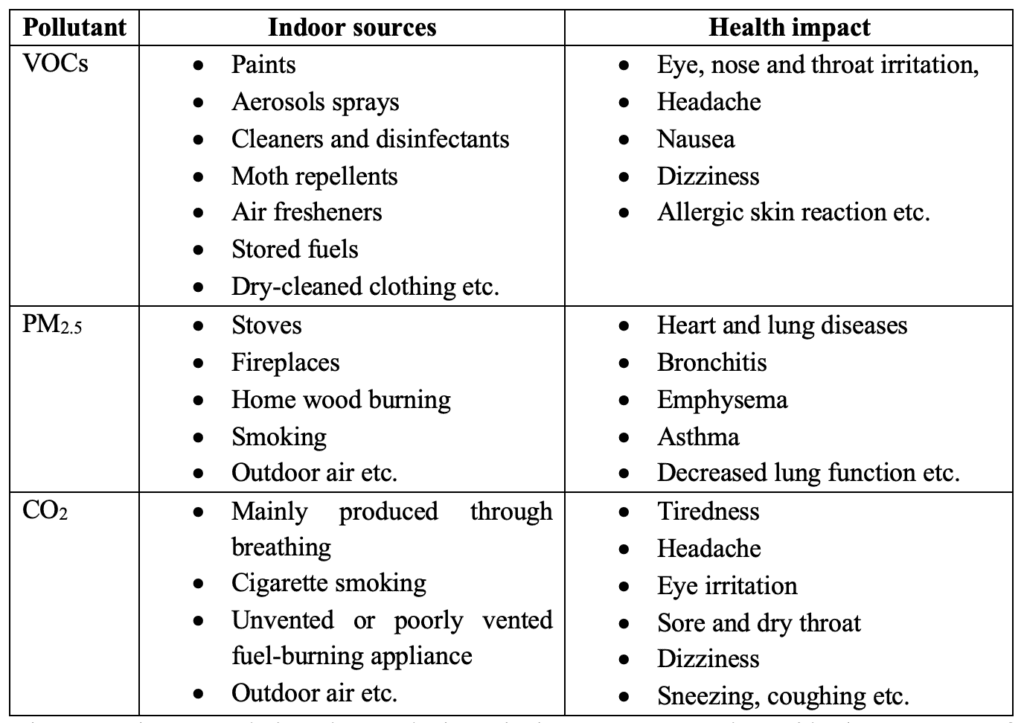
Apartment Planimetry and Analysis
Indoor measurement devices were placed in both the bedroom and the living room. The devices were positioned at an average height of 1.5 meters above the ground level (see Figure 2). Measurements were conducted over 7 days.


Table 2 and Table 3 show the maximum, minimum, and average values of the parameters in two analyzed rooms. Notably, none of the average values exceed the WHO 2021 threshold for 24-hour PM2.5 of 15 μg/m3, the accepted CO2 level of 900 ppm, and the accepted VOC level of 265 ppb.

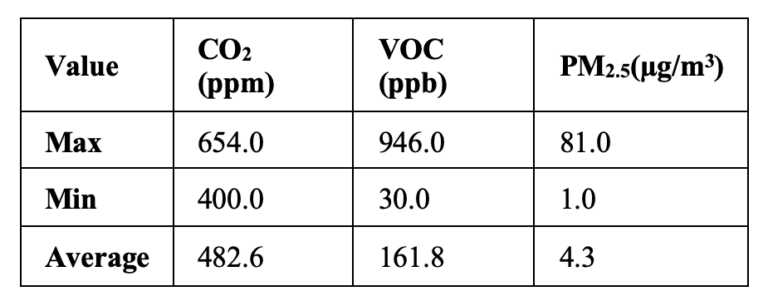
Peaks of the Evaluated Pollutants
Figures 3, 4, and 5 illustrate the peaks of the pollutants considered in this study. High levels of carbon dioxide were detected from night until morning. These peaks were caused by the combination of human respiration during the night and closed windows, which did not allow ventilation and created an increase in CO2. During the daytime, CO2 concentrations significantly dropped due to open windows or the absence of people in the apartment.
Conversely, the concentration patterns of VOCs and PM2.5 did not exhibit regular trends and were primarily associated with specific activities. For instance, VOC peaks were linked to the use of cosmetic sprays such as perfumes, hair sprays, and deodorants. PM2.5 peaks, on the other hand, were largely due to morning routines like making the bed and getting ready, as well as the resuspension of particles upon waking up. Evening activities, such as cooking, and particle resuspension by human movement also contributed to elevated PM2.5 levels. On some days, like Thursday and Saturday, no resuspension was observed due to the apartment being unoccupied.
Findings in the Bedroom
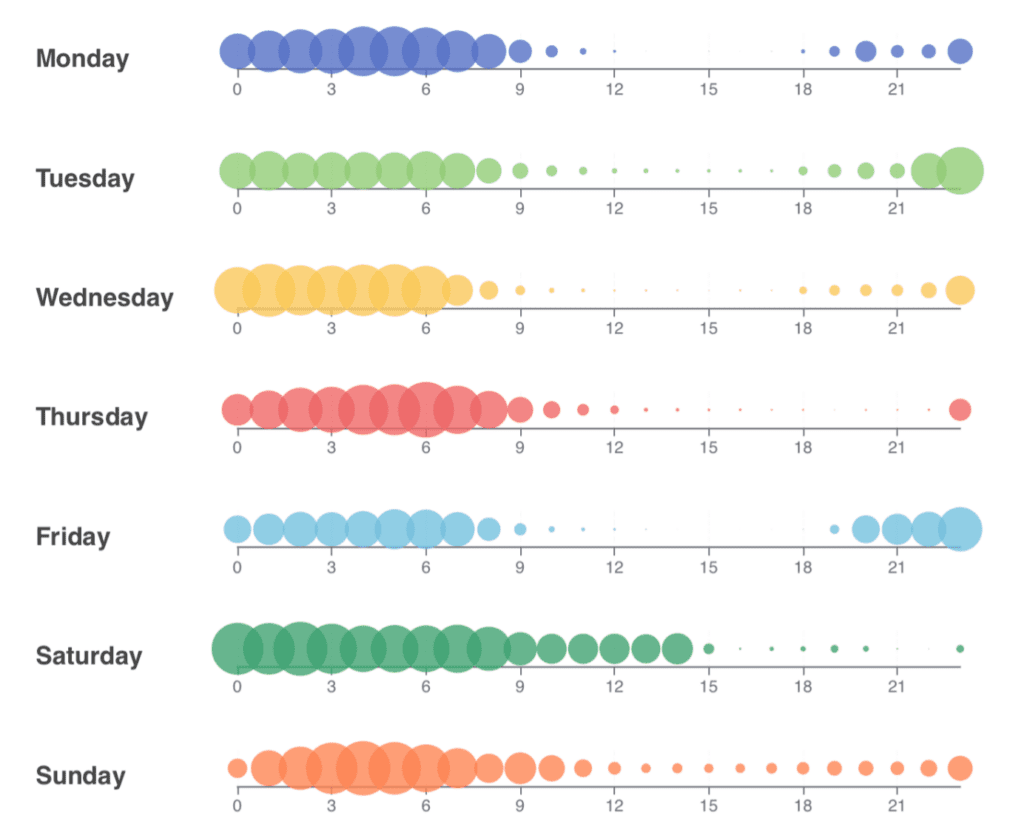
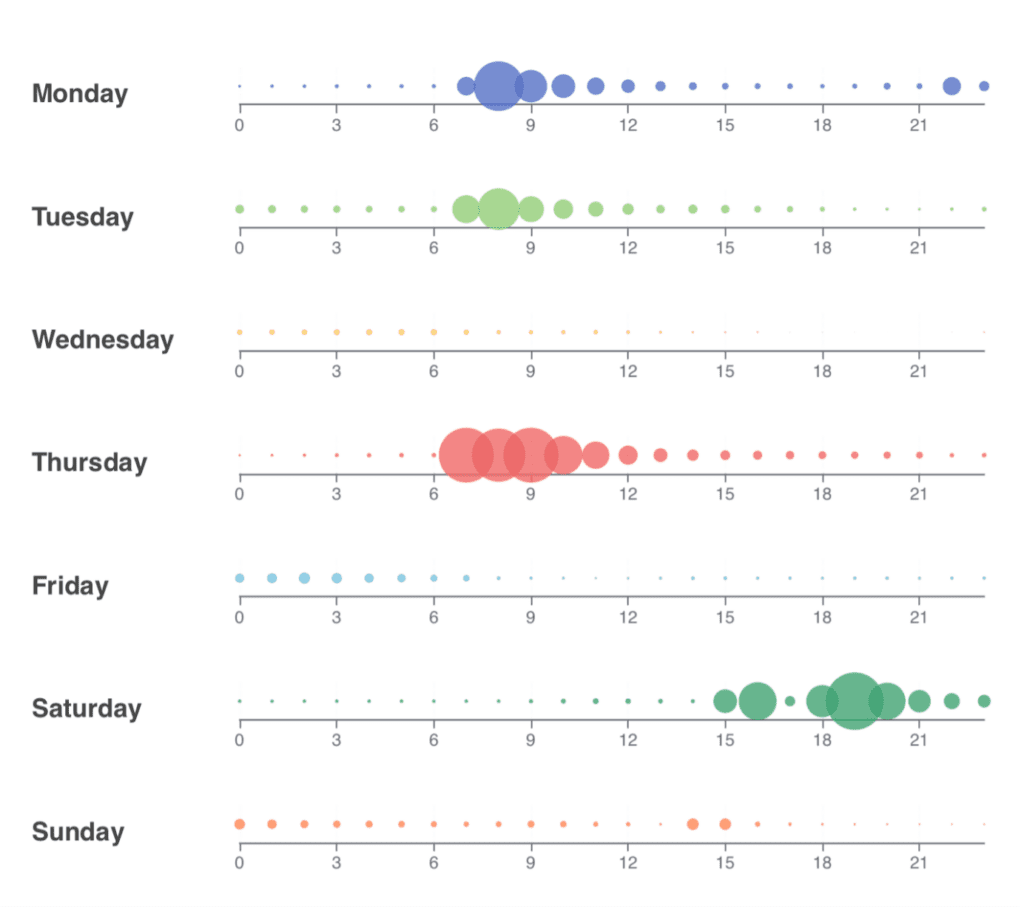
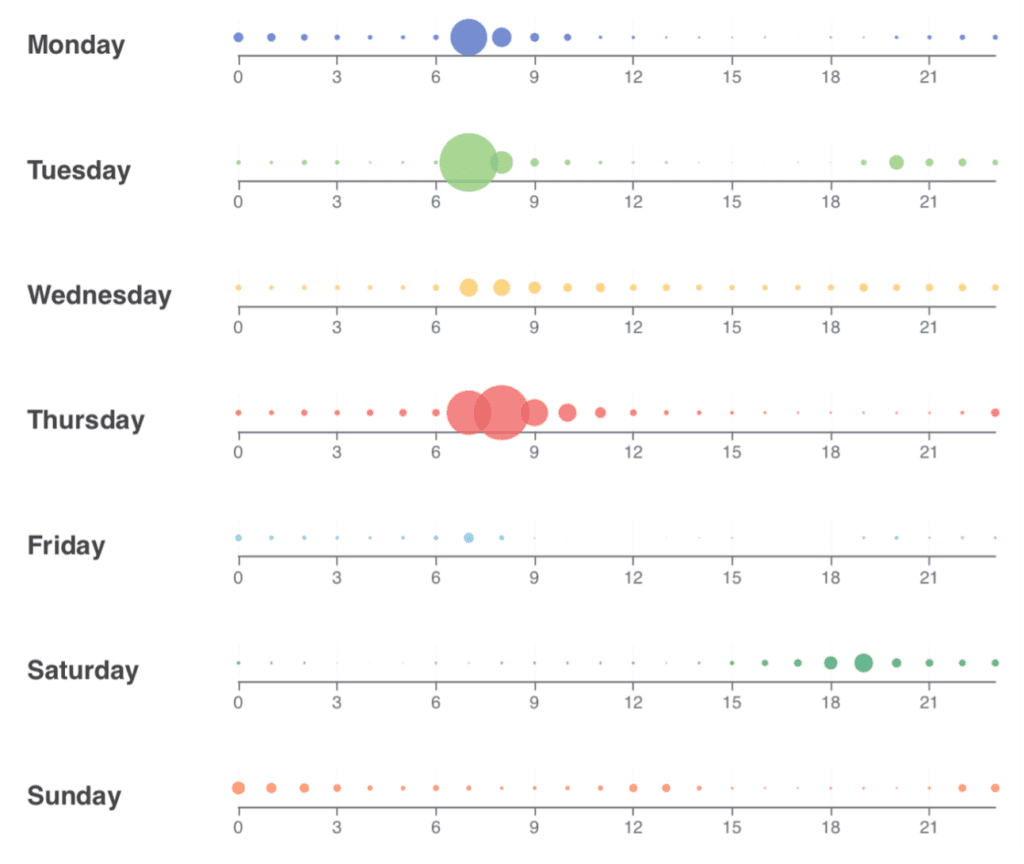
Findings in the Living Room and Integrated Kitchen
A similar indoor air quality analysis was conducted in the living room integrated with the kitchen (see Figures 6, 7, and 8). High levels of carbon dioxide were detected during the morning hours, decreasing by the afternoon due to an open window that facilitated ventilation.
VOC peaks occurred almost simultaneously in the bedroom, likely caused by the use of cosmetic sprays, detergents, and other cleaning products. High levels of PM2.5 were detected primarily during cooking activities, especially from frying, grilling, and boiling. These methods produce more particulate matter because the high temperatures involved cause the combustion of cooking oil and fats, releasing fine particles into the air.



Concluding Findings
In summary, the living room and kitchen area exhibited similar patterns to the bedroom, with CO2 levels influenced by ventilation and VOC and PM2.5 levels associated with specific activities like cleaning and cooking.
The average concentration of CO2 was higher in the bedroom, likely due to its smaller area and the presence of a person sleeping there at night. Conversely, VOC and PM2.5 levels were higher in the living room due to activities like cooking, cleaning, and using cosmetic products. However, none of the pollutants consistently exceeded threshold levels. Peaks were mainly detected during periods of high activity but did not occur regularly.
There are some tips and recommendations people can use to avoid the peaks of mentioned pollutants.
For the kitchen and living room:
- Ensure windows are regularly opened during cooking to allow for fresh air exchange. Use lids on pots and pans to reduce the release of steam and particles. A kitchen hood can also be very effective for capturing cooking-related pollutants.
- Choose cooking methods that produce fewer particles, such as boiling or steaming instead of frying or grilling.
- Certain houseplants can help absorb pollutants and improve indoor air quality, though they should be chosen carefully and maintained properly to avoid mold growth.
- Clean the kitchen surfaces, including the stove and hood filters, regularly to prevent the buildup of grease and particles.
For the bedroom and bathroom:
- Apply cosmetics and other personal care products in well-ventilated areas or near open windows to minimize VOC exposure.
- Select a fragrance-free cleaning product and use water and mild detergents instead of harsh chemicals to reduce VOCs and particulate matter.
- Use a window vent or keep a small window open at night to prevent CO2 buildup while sleeping. This helps maintain good indoor air quality and avoids high CO2 concentrations.
- Reduce the use of aerosol products like air fresheners and sprays, which can contribute to VOC levels.
- Use a dehumidifier or exhaust fan in the bathroom to prevent excess moisture, which can contribute to mold growth and increase airborne particles.
Moreover, if you live close to busy roads, choose a time when traffic is lighter to open windows and ventilate your home, avoiding peak hours to reduce exposure to outdoor pollutants.
Latest Articles

School air quality: protect children today | Airscan
Children are more vulnerable to air pollution at school. Key Brussels data, effective measures (school streets, LEZ), and Airscan solutions: monitoring, smart ventilation, certification‑ready reporting.


Ventilation Audits in Flanders Care Homes: Airscan’s 40‑Site Study on Indoor Air Quality
Airscan’s audit of 40 Flemish care homes uncovered critical ventilation issues: nearly 1 in 4 rooms exceeded safe CO₂ limits. With VEB and VIPA support, the study offers data-driven solutions to protect residents’ health.
